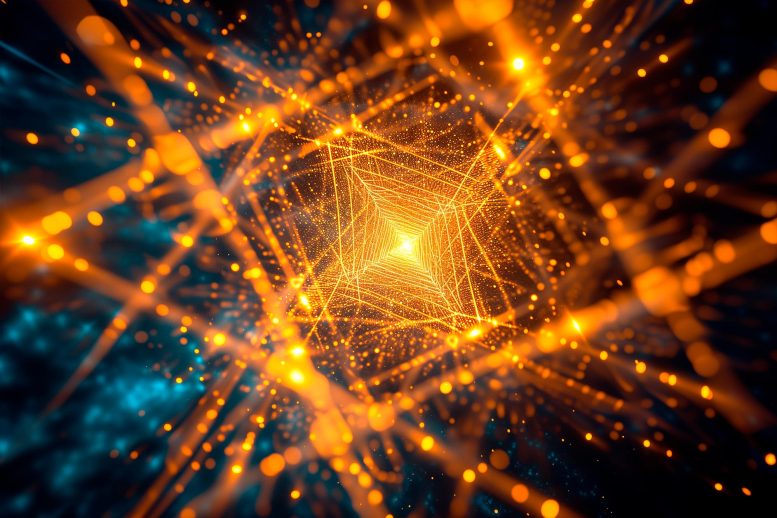
Researchers at Penn State have introduced a groundbreaking material fusion that enables a new form of superconductivity, crucial for advancing quantum computing and exploring the theoretical chiral Majorana particles. Their study demonstrates how combining magnetic materials can lead to emergent superconductivity, marking a significant leap in creating chiral topological superconductors and potentially unlocking new avenues in quantum computing research.
A new fusion of materials, each with special electrical properties, has all the components required for a unique type of superconductivity that could provide the basis for more robust quantum computing. The new combination of materials, created by a team led by researchers at Penn State, could also provide a platform to explore physical behaviors similar to those of mysterious, theoretical particles known as chiral Majoranas, which could be another promising component for quantum computing.
The new study was recently published in the journal Science. The work describes how the researchers combined the two magnetic materials in what they called a critical step toward realizing the emergent interfacial superconductivity, which they are currently working toward.
The Role of Chiral Topological Superconductors
Superconductors — materials with no electrical resistance — are widely used in digital circuits, the powerful magnets in magnetic resonance imaging (MRI) and particle accelerators, and other technology where maximizing the flow of electricity is crucial. When superconductors are combined with materials called magnetic topological insulators — thin films only a few atoms thick that have been made magnetic and restrict the movement of electrons to their edges — the novel electrical properties of each component work together to produce “chiral topological superconductors.” The topology, or specialized geometries and symmetries of matter, generates unique electrical phenomena in the superconductor, which could facilitate the construction of topological quantum computers.
Quantum computers have the potential to perform complex calculations in a fraction of the time it takes traditional computers because, unlike traditional computers which store data as a one or a zero, the quantum bits of quantum computers store data simultaneously in a range of possible states. Topological quantum computers further improve upon quantum computing by taking advantage of how electrical properties are organized to make the computers robust to decoherence, or the loss of information that happens when a quantum system is not perfectly isolated.
Breakthrough in Material Combination
“Creating chiral topological superconductors is an important step toward topological quantum computation that could be scaled up for broad use,” said Cui-Zu Chang, Henry W. Knerr Early Career Professor and associate professor of physics at Penn State and co-corresponding author of the paper. “Chiral topological superconductivity requires three ingredients: superconductivity, ferromagnetism, and a property called topological order. In this study, we produced a system with all three of these properties.”
The researchers used a technique called molecular beam epitaxy to stack together a topological insulator that has been made magnetic and an iron chalcogenide (FeTe), a promising transition metal for harnessing superconductivity. The topological insulator is a ferromagnet — a type of magnet whose electrons spin the same way — while FeTe is an antiferromagnet, whose electrons spin in alternating directions. The researchers used a variety of imaging techniques and other methods to characterize the structure and electrical properties of the resulting combined material and confirmed the presence of all three critical components of chiral topological superconductivity at the interface between the materials.
Exploring Superconductivity and Ferromagnetism
Prior work in the field has focused on combining superconductors and nonmagnetic topological insulators. According to the researchers, adding in the ferromagnet has been particularly challenging.
“Normally, superconductivity and ferromagnetism compete with each other, so it is rare to find robust superconductivity in a ferromagnetic material system,” said Chao-Xing Liu, professor of physics at Penn State and co-corresponding author of the paper. “But the superconductivity in this system is actually very robust against the ferromagnetism. You would need a very strong magnetic field to remove the superconductivity.”
The research team is still exploring why superconductivity and ferromagnetism coexist in this system.
“It’s actually quite interesting because we have two magnetic materials that are non-superconducting, but we put them together and the interface between these two compounds produces very robust superconductivity,” Chang said. “Iron chalcogenide is antiferromagnetic, and we anticipate its antiferromagnetic property is weakened around the interface to give rise to the emergent superconductivity, but we need more experiments and theoretical work to verify if this is true and to clarify the superconducting mechanism.”
Potential for Majorana Particle Research
The researchers said they believe this system will be useful in the search for material systems that exhibit similar behaviors as Majorana particles — theoretical subatomic particles first hypothesized in 1937. Majorana particles act as their own antiparticle, a unique property that could potentially allow them to be used as quantum bits in quantum computers.
“Providing experimental evidence for the existence of chiral Majorana will be a critical step in the creation of a topological quantum computer,” Chang said. “Our field has had a rocky past in trying to find these elusive particles, but we think this is a promising platform for exploring Majorana physics.”
Reference: “Interface-induced superconductivity in magnetic topological insulators” by Hemian Yi, Yi-Fan Zhao, Ying-Ting Chan, Jiaqi Cai, Ruobing Mei, Xianxin Wu, Zi-Jie Yan, Ling-Jie Zhou, Ruoxi Zhang, Zihao Wang, Stephen Paolini, Run Xiao, Ke Wang, Anthony R. Richardella, John Singleton, Laurel E. Winter, Thomas Prokscha, Zaher Salman, Andreas Suter, Purnima P. Balakrishnan, Alexander J. Grutter, Moses H. W. Chan, Nitin Samarth, Xiaodong Xu, Weida Wu, Chao-Xing Liu and Cui-Zu Chang, 8 February 2024, Science.
DOI: 10.1126/science.adk1270
In addition to Chang and Liu, the research team at Penn State at the time of the research included postdoctoral researcher Hemian Yi; graduate students Yi-Fan Zhao, Ruobing Mei, Zi-Jie Yan, Ling-Jie Zhou, Ruoxi Zhang, Zihao Wang, Stephen Paolini and Run Xiao; assistant research professors in the Materials Research Institute Ke Wang and Anthony Richardella; Evan Pugh University Professor Emeritus of Physics Moses Chan; and Verne M. Willaman Professor of Physics and Professor of Materials Science and Engineering Nitin Samarth. The research team also includes Ying-Ting Chan and Weida Wu at Rutgers University; Jiaqi Cai and Xiaodong Xu at the University of Washington; Xianxin Wu at the Chinese Academy of Sciences; John Singleton and Laurel Winter at the National High Magnetic Field Laboratory; Purnima Balakrishnan and Alexander Grutter at the National Institute of Standards and Technology; and Thomas Prokscha, Zaher Salman, and Andreas Suter at the Paul Scherrer Institute of Switzerland.
This research is supported by the U.S. Department of Energy. Additional support was provided by the U.S. National Science Foundation (NSF), the NSF-funded Materials Research Science and Engineering Center for Nanoscale Science at Penn State, the Army Research Office, the Air Force Office of Scientific Research, the state of Florida and the Gordon and Betty Moore Foundation’s EPiQS Initiative.

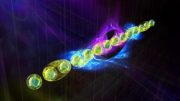
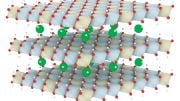
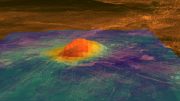
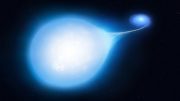
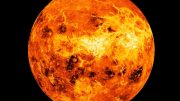
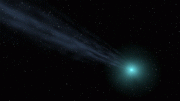
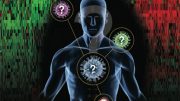
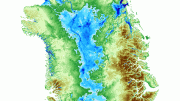
Please answer:
1. Why is there the theoretical chiral Majorana particles?
2. The journal Scientific firmly believe that two high-dimensional spacetime objects can be transformed into two objects that mirror each other via reverse rotation. Is it scientific?
and so on.
According to topological vortex gravitational field theory, chiral matter is mainly exhibited between topological vortices and their antivortices, rather than between high-dimensional spacetime matter formed by their interactions. If Majorana particle is a high-dimensional spacetime substance, there is no theoretical basis to say that it has chirality. The chirality of θ and τ follows the same principle.
The branch of mathematics known as topology has become a cornerstone of modern physics. The perpetually swirling topological vortices defy traditional physics’ expectations. A physical properties of topological vortices is their to spontaneously begin to change periodically in time, even though the system does not experience corresponding periodic interference. Therefore, in the interaction of topological vortices, time is both absolute and relative,and physics often requires treating space and time at the same level.
Low-dimensional spacetime matter is the foundation of high-dimensional spacetime matter. Low-dimensional spacetime matter (such as topological vortex) can form new material structures and derive more complex physical properties via interactions and self-organization. It is extremely wrong and irresponsible to imagine low dimensional spacetime matter using high-dimensional spacetime matter.
Science must follow mathematical rules. For example, the Standard Model (SM) is considered to be one of the most significant achievements of physics in the 20th century. However, the magnetic moment of μ particle is larger than expected, revealed by a g-2 experiment at Fermilab, suggests that the established theory (such as SM) of fundamental particles is incomplete. Furthermore, the SM omitting gravitation, it not involved the time problem and when the particle movement starts. Mathematics is the foundation of science. Physics must respect the scientific nature of mathematics and mathematical models. The SM must be based on mathematical models in order to be scientific, convincing, and in line with natural laws.
I hope researchers are not fooled by the pseudoscientific theories of the Physical Review Letters (PRL), and hope more people dare to stand up and fight against rampant pseudoscience.
The so-called academic journals (such as Physical Review Letters, Nature, Science, etc.) firmly believe that two high-dimensional spacetime objects (such as two sets of cobalt-60) rotating in opposite directions can be transformed into two objects that mirror each other, is a typical case of pseudoscience rampant.
If researchers are really interested in Science and Physics, you can browse https://zhuanlan.zhihu.com/p/643404671 and https://zhuanlan.zhihu.com/p/595280873.
Sure chinatown, sure. Everyone is an idiot but you and your government.
Please.
Very good! It’s really exciting. Can science curse like you do?
Your only reversing s magnetic pole. Say it like it is and just call it reverse magnetism is how they did the pyramids. Now your biggest problem is how to bring back the tide. For enough money I can do that to. And still help Trump win the presidency
Rofl what in the holy flying f*ck?